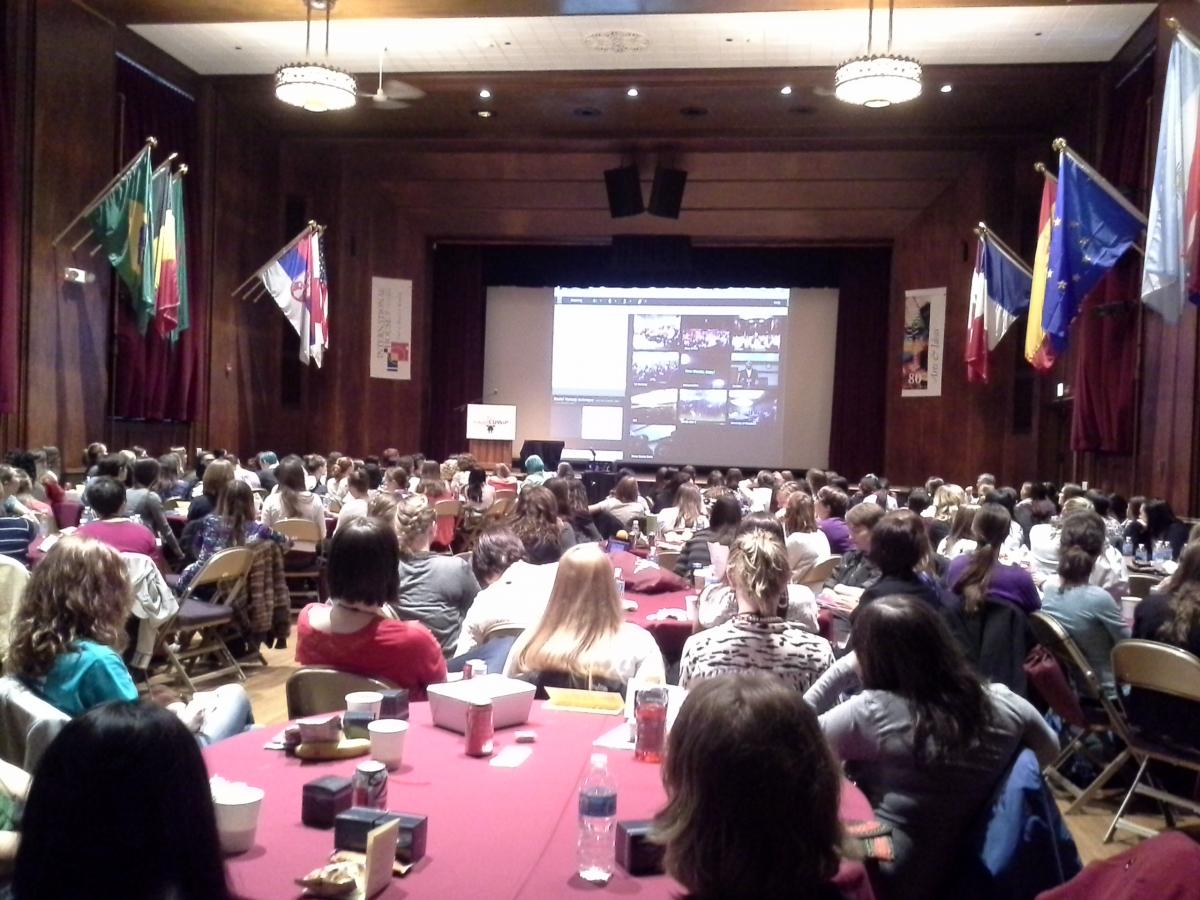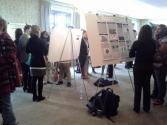Conferences for Undergraduate Women in Physics
January 17, 2014 to January 19, 2014
University of Chicago and Fermi National Accelerator Laboratory
Meeting host: By:Caroline K. Williams
SPS Chapter:

As a woman, sometimes I feel isolated and disconnected from the majority of my male counterparts in physics classes or my research group. Fortunately, there are resources available to accommodate the concerns and recognize the personal and professional struggles of women. In January, I was the only student from my school, Northeastern Illinois University (NEIU), to attend the 2014 Midwest Conference for Undergraduate Women in Physics (CUWiP) at the University of Chicago.
This four-day conference provided great resources for someone like me who is interested in networking, applying to graduate schools and getting advice from successful female physicists. Moreover, it offered a visit to Fermi National Accelerator Laboratory and a writing workshop where I gained new perspectives related to my interests in physics research and science writing.
The CUWiP, which attracted more than 200 students from colleges in the Midwest, was an ideal networking forum. "It is important to stick together," said Savannah Thais, an undergraduate committee member in her welcoming speech. Willetta Greene-Johnson, a Grammy-winning songwriter and physics professor from Loyola University, said that the reason we need to get together is to share our struggles in our efforts to be successful in physics. Young-Kee Kim, an experimental particle physics professor from UChicago and the head of the 2004 CUWiP Organizing Committee, raised the importance of networking at a career panel. Monica Plisch from the American Physical Society (APS) mentioned LinkedIn as a networking tool and advised us to join the Women in Physics (WIPHYS) email group.
During one of the breaks, I had a great conversation with Kaitlyn Lee, a fourth-year physics major and the president of the UChicago Society of Women in Physics (SWIP). She explained that the SWIP mission is to provide support and networking for women and other minorities. Since I was elected as NEIU’s SPS secretary last April, I have been thinking about creating a program to attract more girls to physics. Lee shared information with me about their outreach programs and openness to the idea of inviting female students from different schools in the city to join their programs.
Many speakers presented data that showed that women are still a minority in today's physics community. Debra Fischer, a professor of astronomy at Yale University said, "If we don't bring a lot of diversity to solve the problem, we will repeat the same problem. We have a lot to contribute." One of Dr. Fischer’s statements still resonates with me, "The biggest challenge is me. I deserve a seat at the table." She also opened up about her personal struggle as a mother and a physicist.
Valuable lessons could also be learned from discussions with fellow attendees. One student told me she applied to 13 REUs and was accepted to two of them. I only applied to two REUs and was not accepted to either of them. This is something to remember when applying to graduate schools.
At a discussion on applying for graduate school, Stuart Gazes, an undergraduate program chair from UChicago, explained four important factors in the application process: grades, physics GRE scores, letters of recommendation, and a personal statement. He suggested we start preparing for the physics GRE in early summer, or sooner, and not wait until September to prepare for the October test. I was thrilled that APS provided physics GRE flashcards for free at the conference. Dr. Gazes also reminded us about the importance of undergraduate research experience when applying to graduate schools.
The conference also featured student research presentations, where I learned about a graphene-based supercapacitor, the decay properties of neutral kaons, and the detector upgrade of the ALICE experiment at the Large Hadron Collider. Tasha Williams from Chicago State University introduced me to her professor, Dr. Edmundo Garcia, who provided her with an opportunity to do research at CERN in Switzerland. He was very nice and open to further questions about research at CERN.
One of my career goals is working at laboratory like CERN or Fermilab. I was excited that the conference offered a visit to Fermilab. Our tour guide, Anne Mary Teichert from the Lederman Science Center, explained the history of Fermilab, its current research, and the benefits of the research.
On the tour I learned about the three frontiers of research to answer fundamental questions about the universe: the energy frontier, the intensity frontier and the cosmic frontier. We visited the MINOS cavern and MINERvA to learn about current developments in the neutrino oscillation experiments. I am fascinated by neutrinos, which are nicknamed "ghost particles” due to their elusive nature. At my school I founded an SPS newsletter and I called it “Neutrino.” After lunch, we continued our tour with visits to the tevatron collider and its DZero experiment where the top quark was discovered. We also visited the linear accelerator building to see the historic Cockcroft-Walton accelerator and the main control room of the tevatron collider.
Another highlight from the conference was a writing workshop. I believe a scientist must possess exceptional writing skills to bridge the gap between science and the general public. Since English is my second language, I intend to keep improving my skills by attending writing workshops or publishing my work in the school newspaper. At the workshop, Tracy Weiner, associate director of the UChicago writing program, taught us many valuable lessons in writing techniques. She informed us that before writing we should read a lot in our field of interest. We should notice writing styles and find out why we think they are bad or good. Our motivation in writing must be to genuinely inform people and to explain why our work is important. "Motivation is clarity," Tracy Weiner said.
In terms of engaging the general public in science, another great technique was offered by Michelle B. Larson, president and CEO of Adler Planetarium. Instead of focusing on the result of our work, she said, we should focus on the process. She also mentioned an interesting, out-of-the box, approach to take when applying for jobs. Dr. Larson said, "Apply for the job that does not exist. Offer what you can do."
The conference also presented a wide range of career options for women with physics degrees, such as teaching, working at museums, computer programming, and finance and investment opportunities. In the fields of experimental research, we were exposed to the current research in dark matter, exoplanets, the Higgs boson, quantum computing, and medical physics.
Needless to say, the 2014 Midwest CUWiP was a "one-stop shop" for great resources for any aspiring female physicist. I went back home with a stronger motivation to study physics, more confidence in applying to graduate schools, and a list of things I plan to share with my friends at school.
Areas of Alignment: Career Resources: Scientific Categories:

